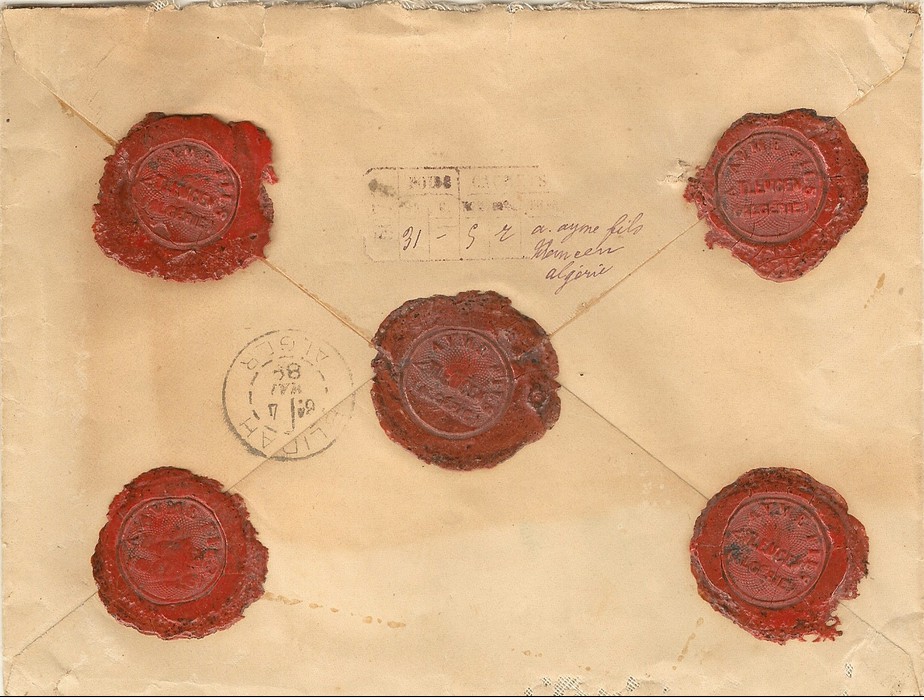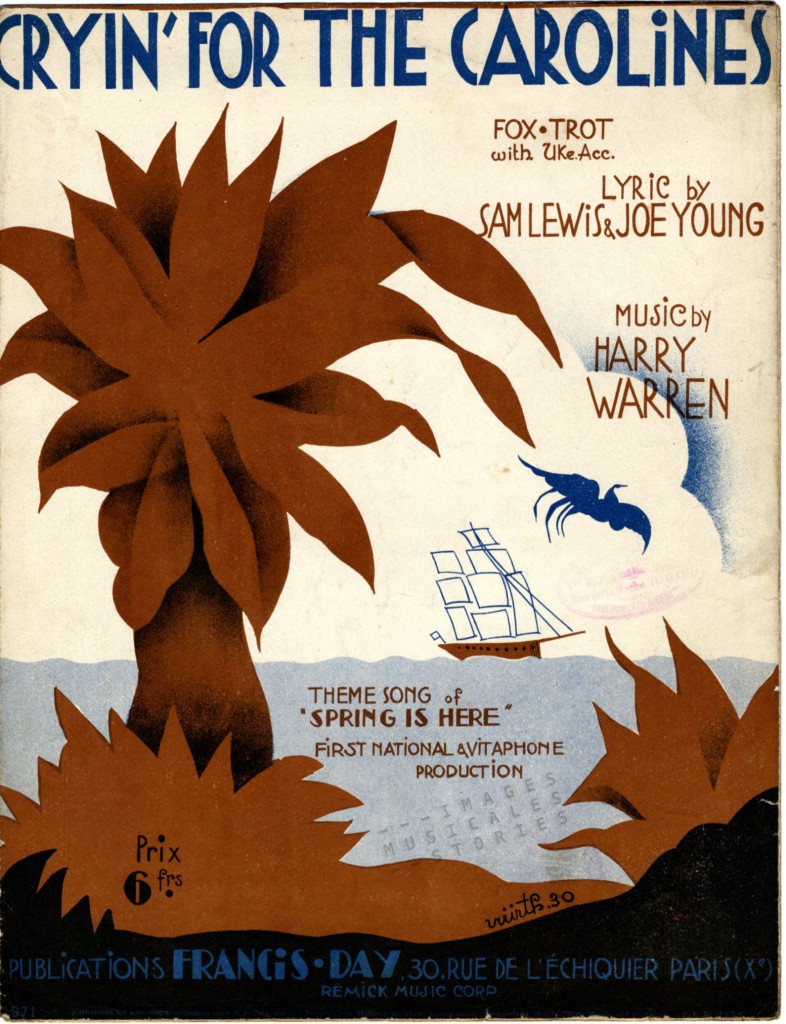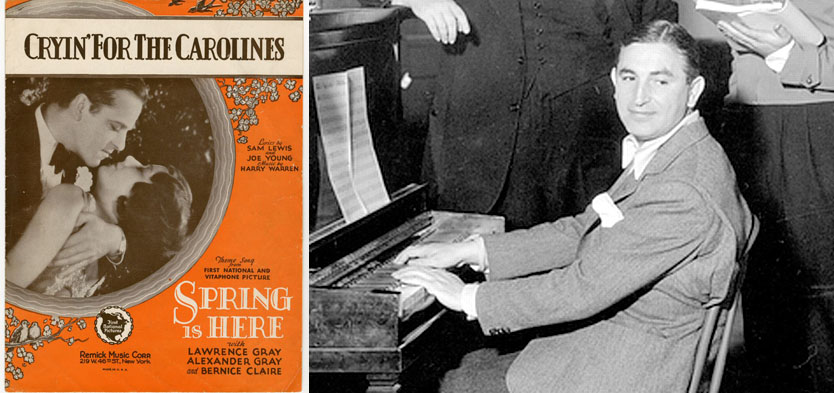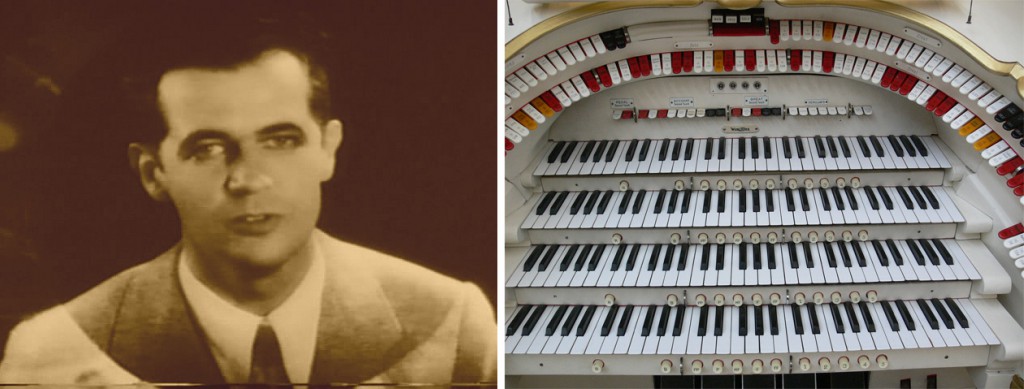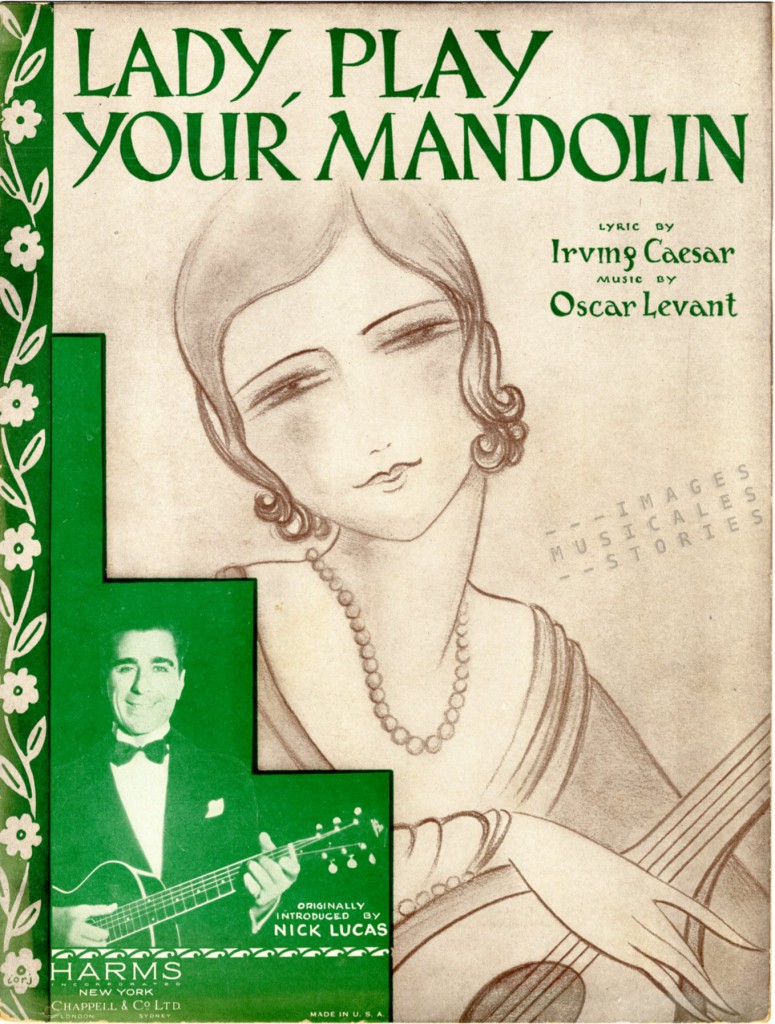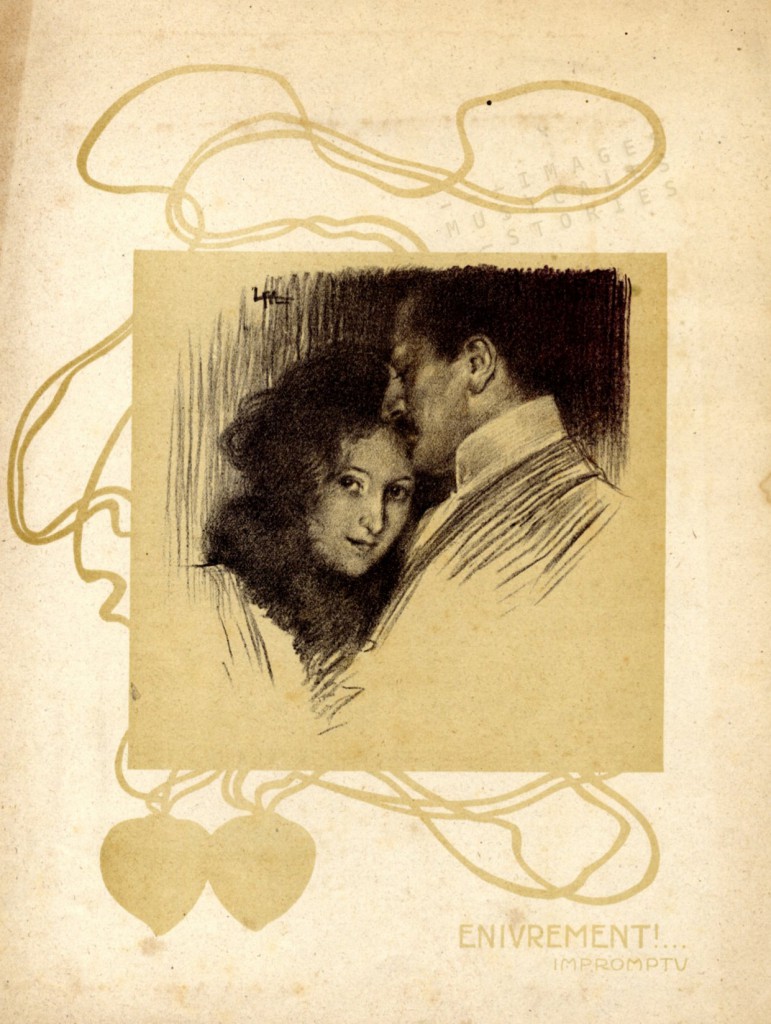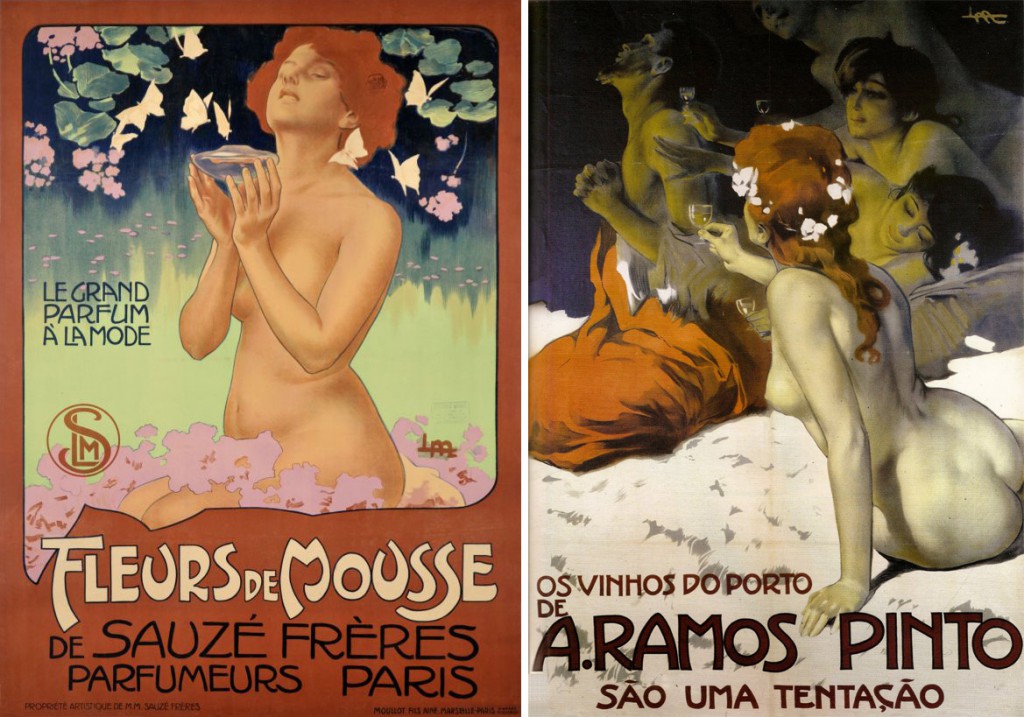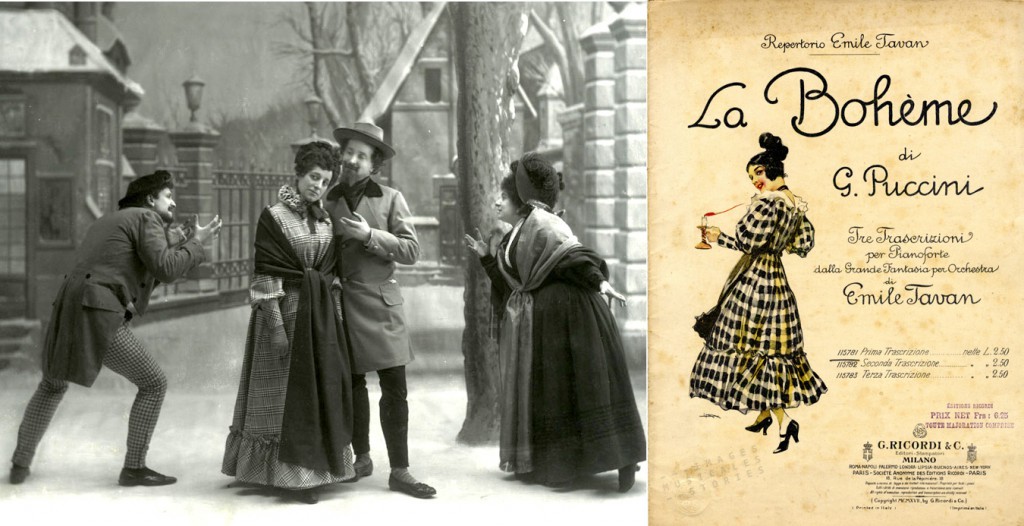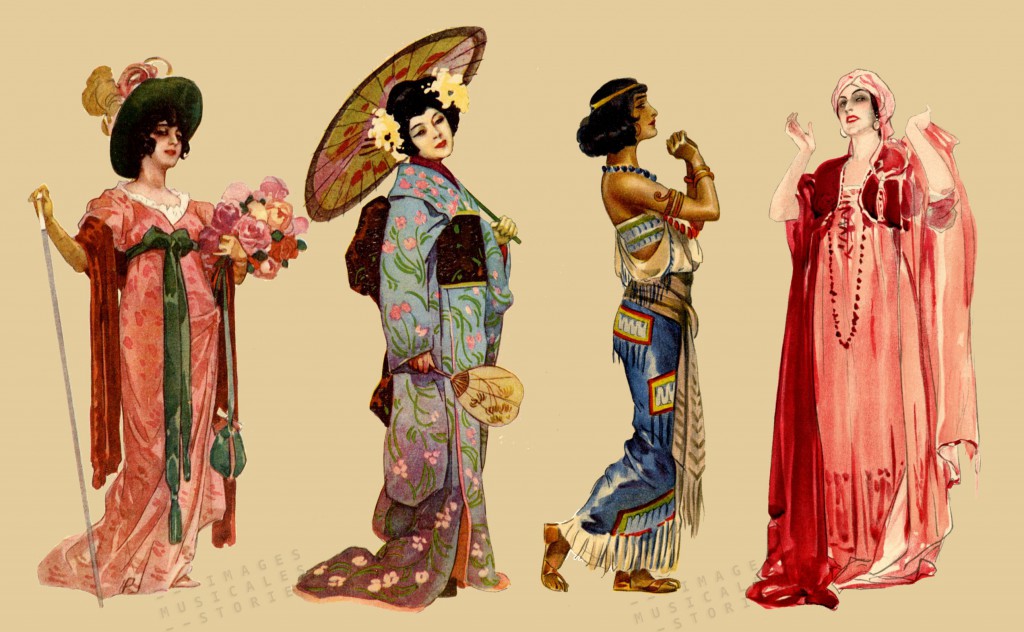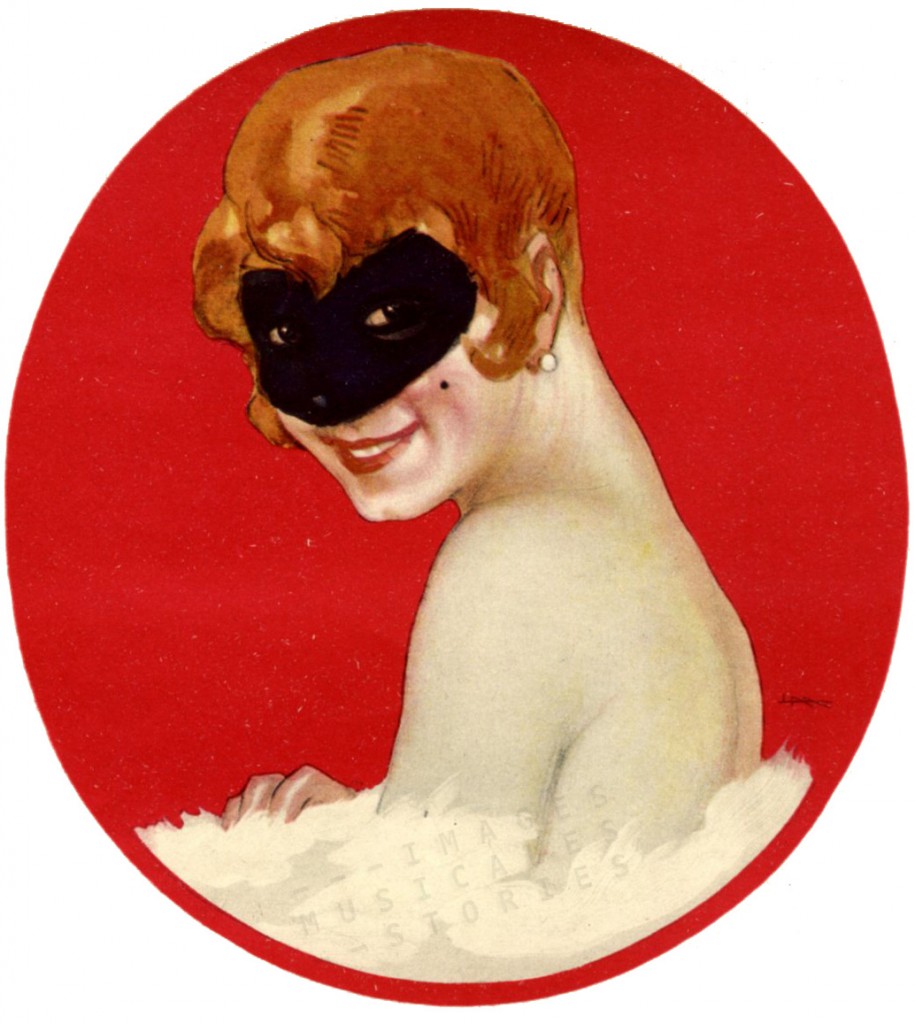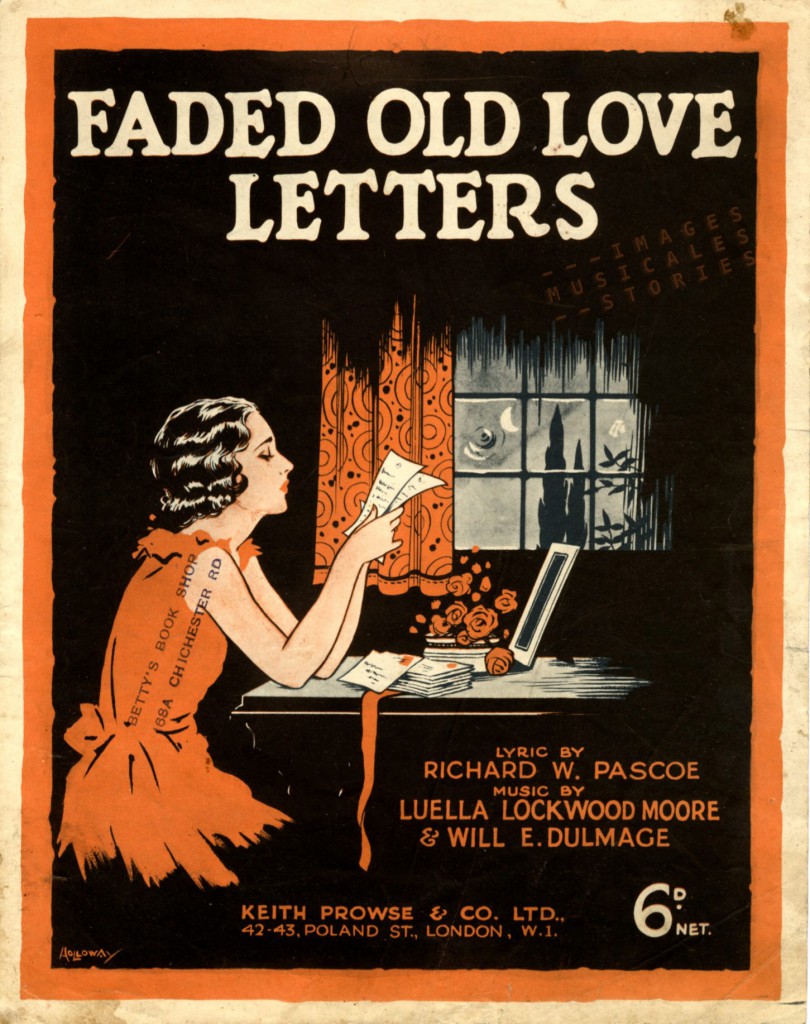
The Museum of Fine Arts MSK in Ghent recently showed the exhibition Love Letters in War and Peace. It followed the visual traces of ‘famous and lesser-known romances’ in different times: the prude Victorian society, the fin de siècle and the roaring Twenties, in war and in peace. This has inspired us to browse our collection of sheet music for songs about love letters.
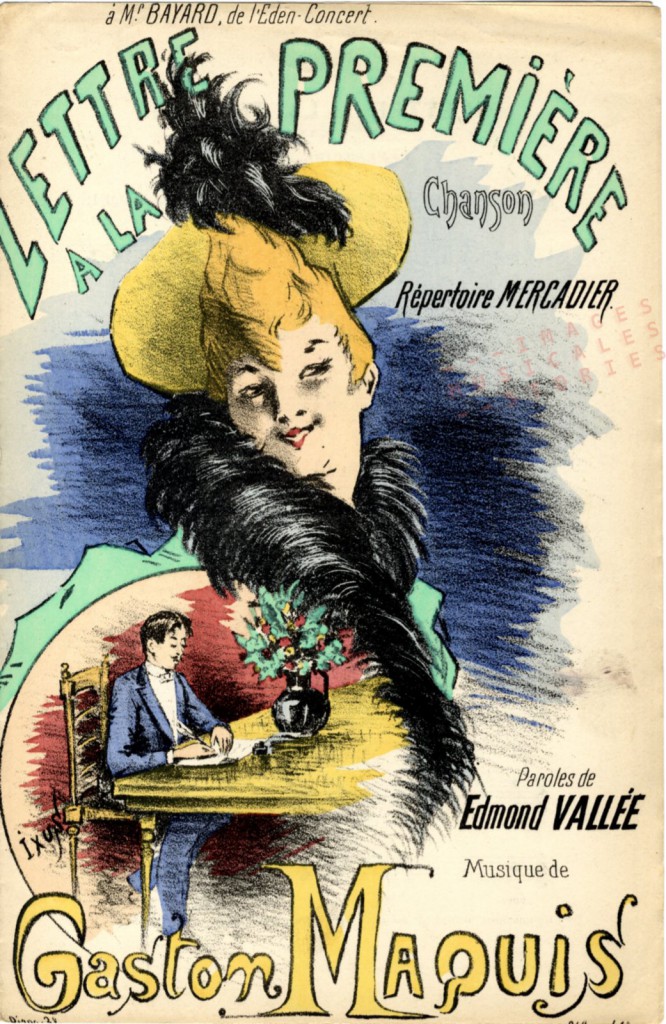
The ‘Letter to the First One’: what can be more difficult for a timid young man than to write a beautiful love letter to make his first object of desire swoon and reciprocate his tender feelings?
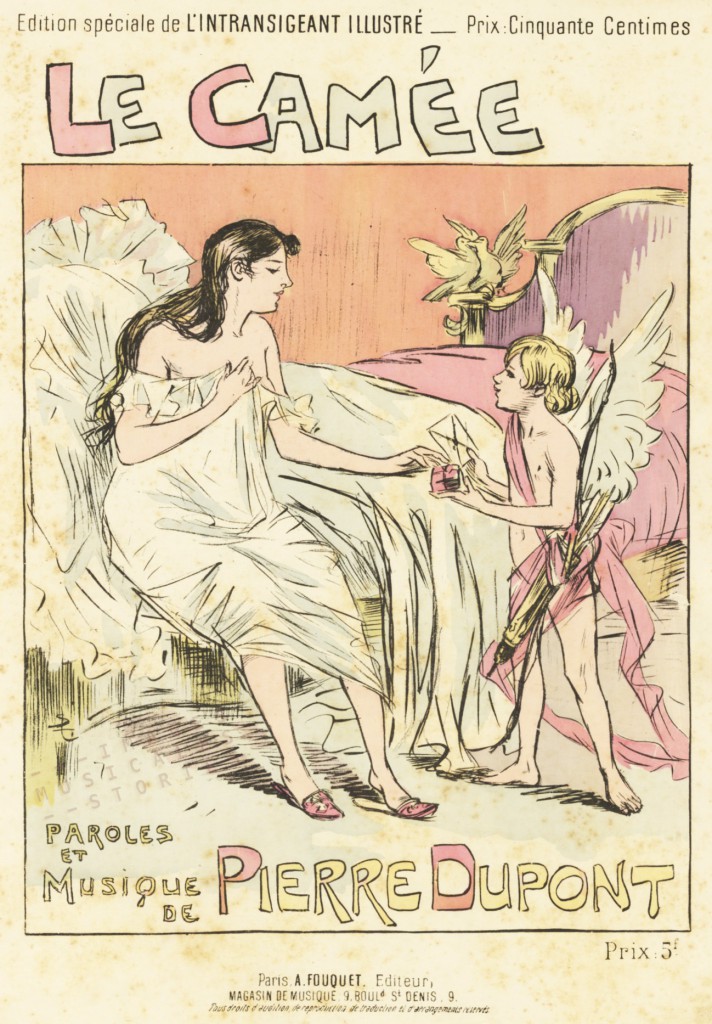
Théophile Steinlen borrows from mythology to illustrate the theme of postal romance. The two doves in the background and the young lady in negligee leave no doubt that the ever mischievous Eros is bringing – together with a precious gift – a love letter for a (probably) illicit love affair…
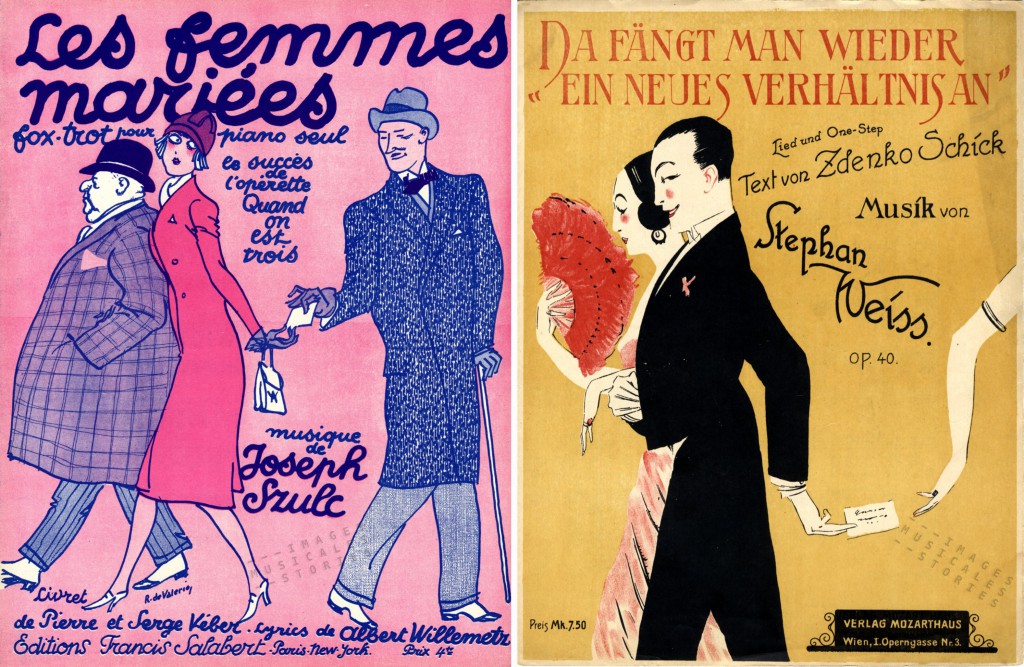
And yes, there are lots of songs about unfaithful lovers and spouses. These two covers make it clear how easy it is to contact ‘the other one’ with surreptitious letters. But does not the blatant naivety of the cheated husband in ‘Camouflage‘ add spice to the fun and thrill of swapping secret messages and furtive words at the theatre..?

Sometimes the illustrator only has to draw Eros with an envelope to make his point that love letters are the sweet accompaniment of every true courtship.

These love letters are clearly well protected from prying eyes by five wax seals (a custom used for official papers until well into the 20th century…).
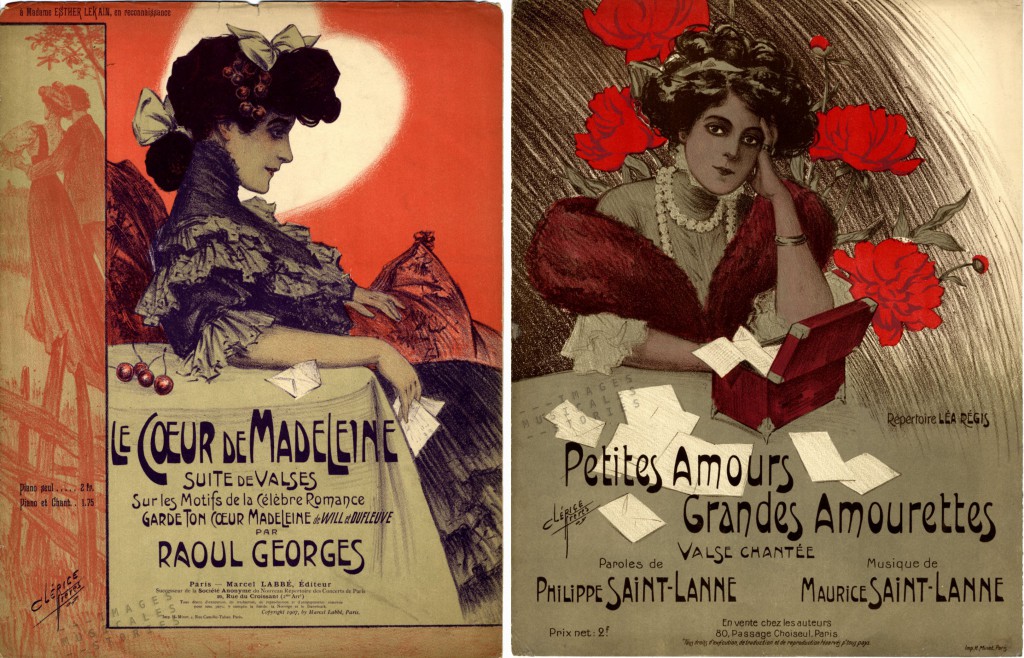 The drawings by Clérice are more equivocal. Did his mysterious Belle-Epoque ladies receive good or bad news? Or are they brooding on a shrewd reply…
The drawings by Clérice are more equivocal. Did his mysterious Belle-Epoque ladies receive good or bad news? Or are they brooding on a shrewd reply…
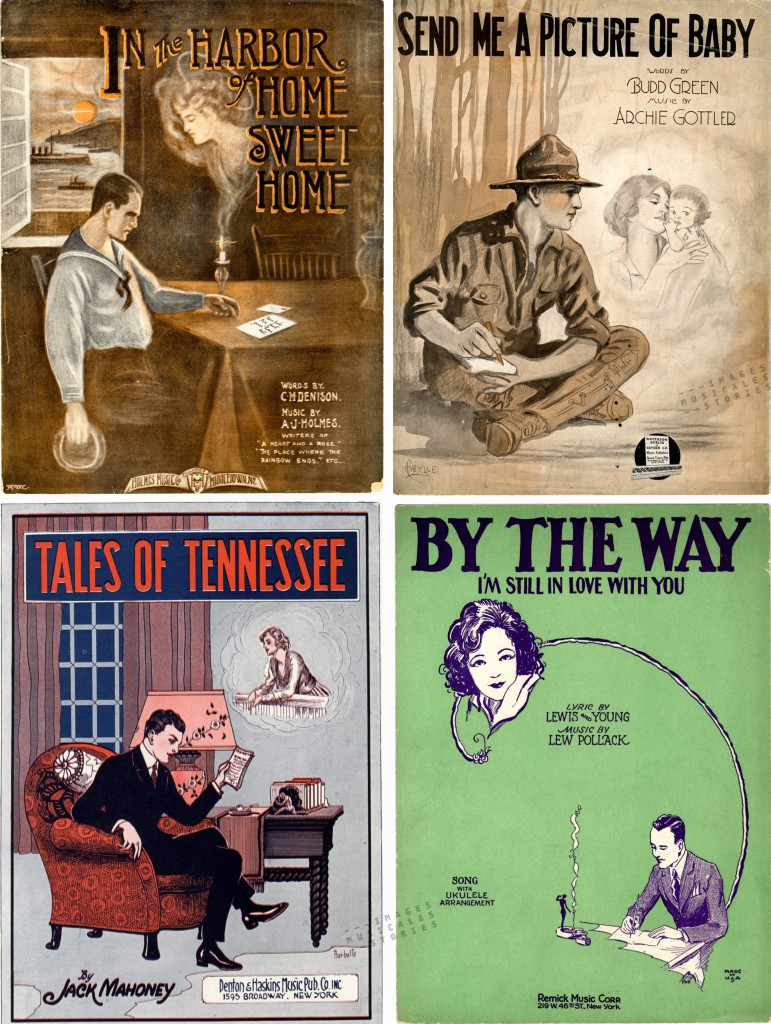 In general American sheet music share the drawing style of comics. In these four examples, writing or receiving a love letter brings visions of the loved one, be it in candle smoke or cloud, or in an (ahem) arabesque.
In general American sheet music share the drawing style of comics. In these four examples, writing or receiving a love letter brings visions of the loved one, be it in candle smoke or cloud, or in an (ahem) arabesque.
 The French illustrator Donjean used the same technique: the smoke of burning love letters symbolises the man’s consuming pain at the end of his marriage.
The French illustrator Donjean used the same technique: the smoke of burning love letters symbolises the man’s consuming pain at the end of his marriage.
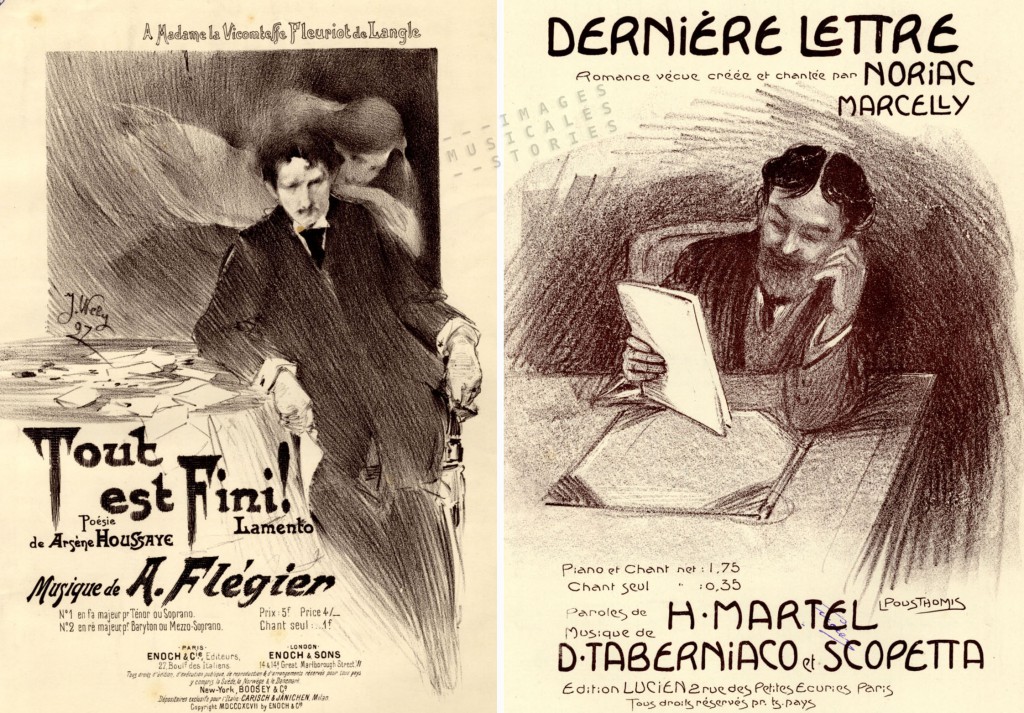 Pain is also very present in ‘Tout est Fini!‘. The worried man drawn by Jacques Wély seems inconsolable. The melancholia of the fin de siècle oozes from this song cover. The man on the right, by Pousthomis, seems better armed against the setback of receiving the farewell letter (or is he amusingly rereading his own prose?).
Pain is also very present in ‘Tout est Fini!‘. The worried man drawn by Jacques Wély seems inconsolable. The melancholia of the fin de siècle oozes from this song cover. The man on the right, by Pousthomis, seems better armed against the setback of receiving the farewell letter (or is he amusingly rereading his own prose?).
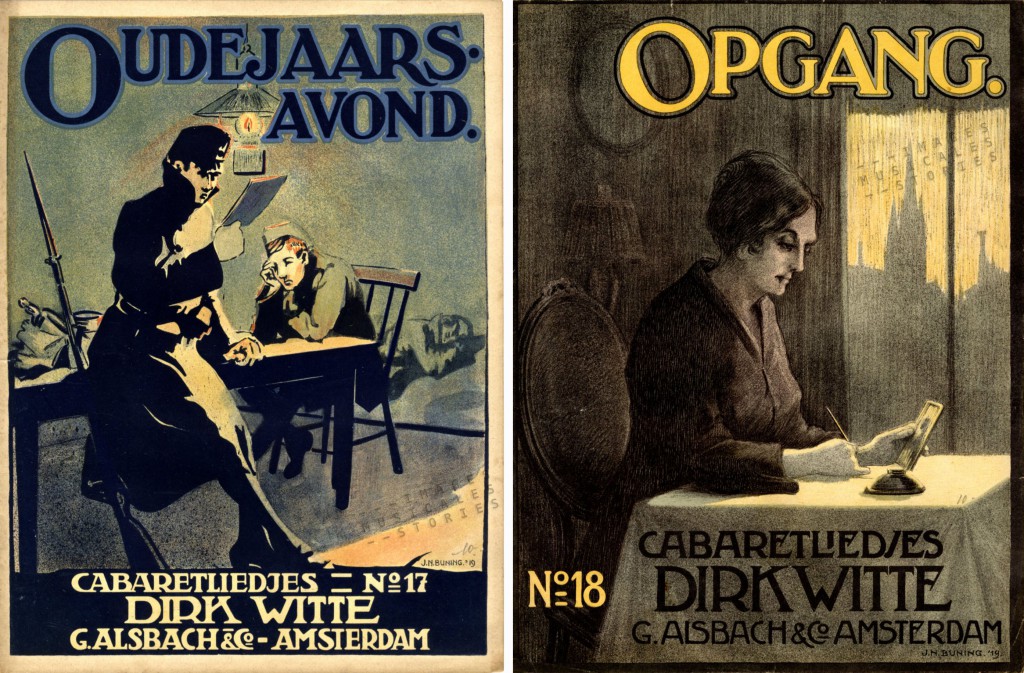 Both these Dutch covers by J. N. Buning are about love letters during the Great War.
Both these Dutch covers by J. N. Buning are about love letters during the Great War.
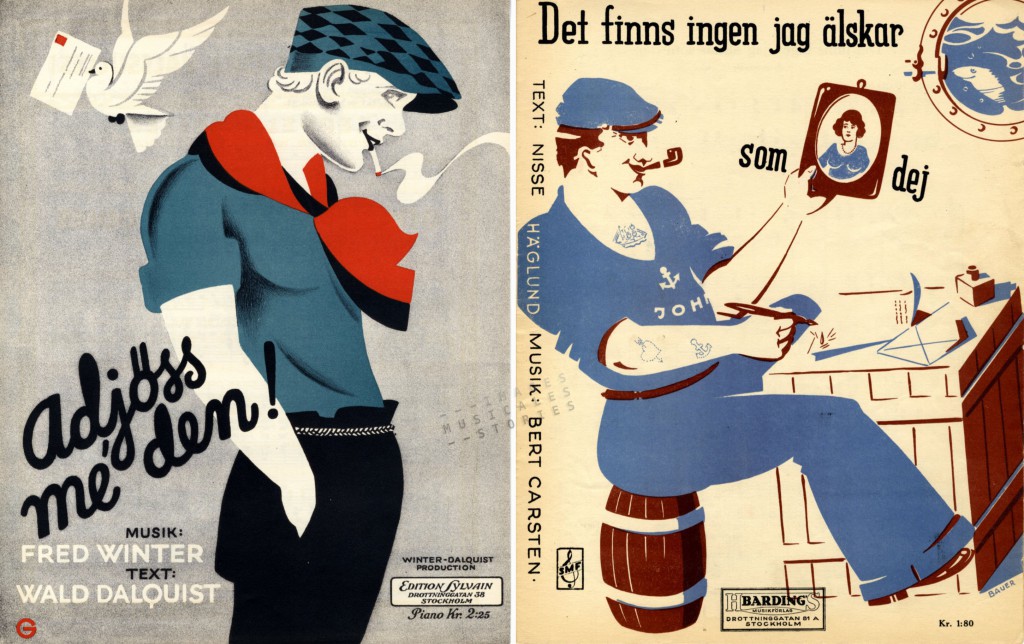
We close this post with two Swedish cartoonish covers of seamen who are known to have lady friends all around the world, sweethearts who all need emotional relief and postal attention…

